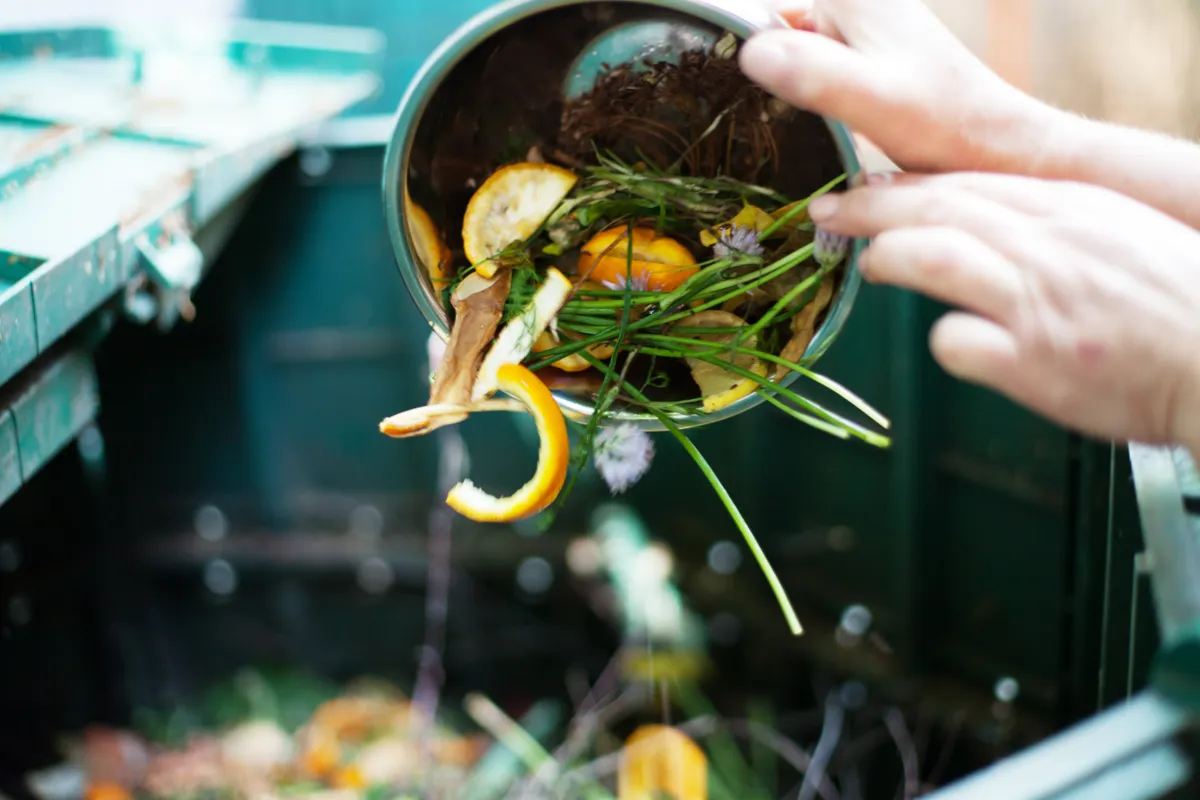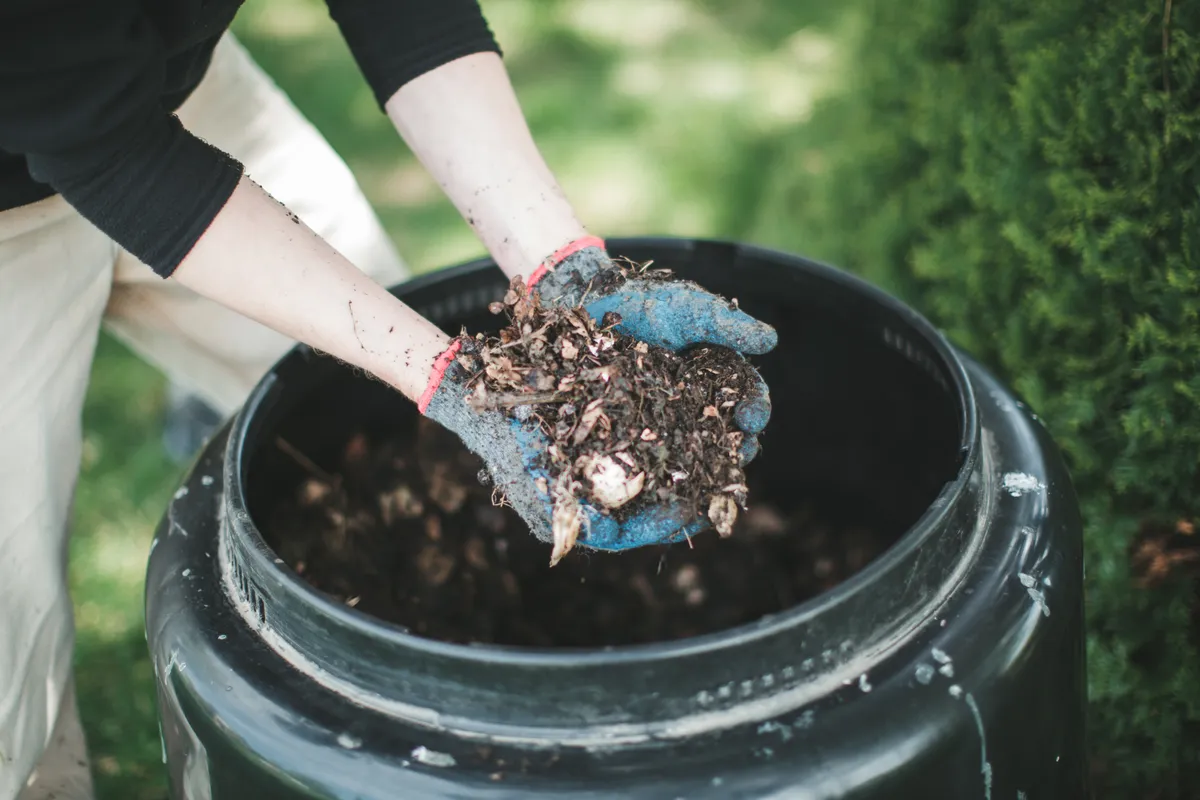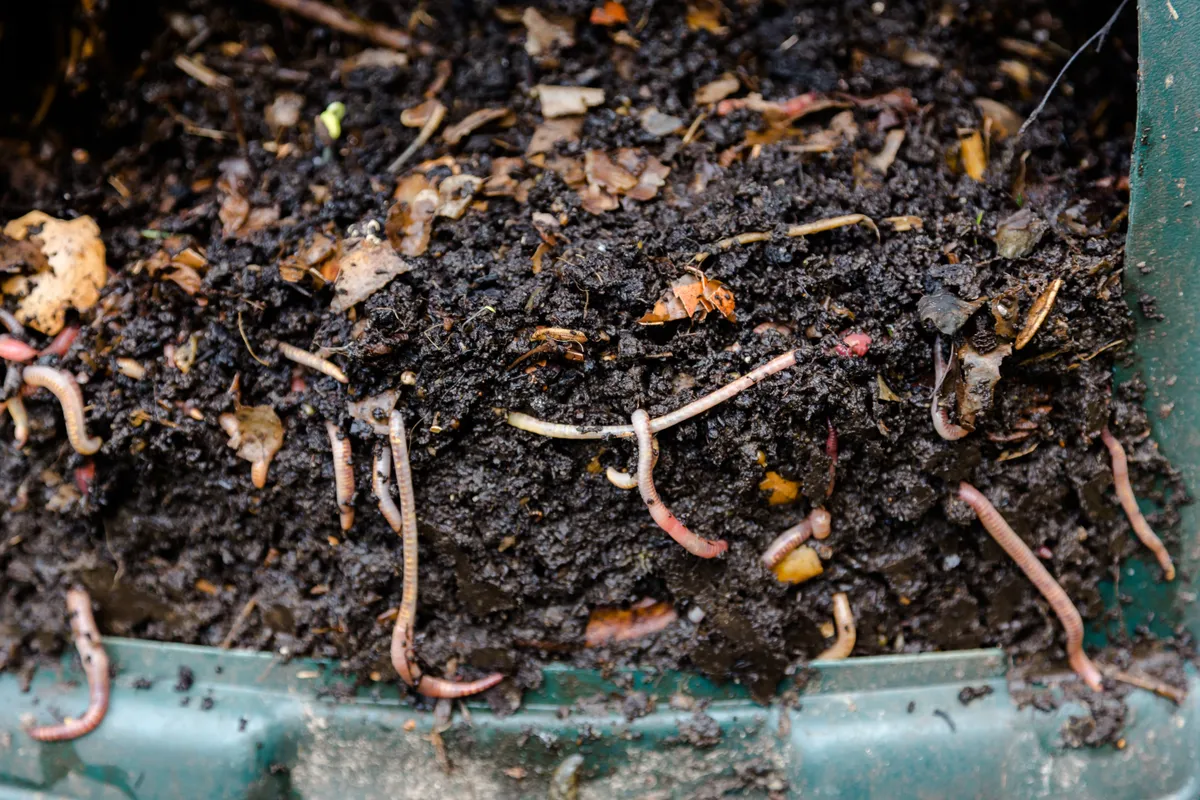A good wildlife garden should be environmentally friendly, and composting is central to this. Each of us generates a staggering half-tonne of rubbish a year, a quarter of which could be composted. While many local authorities now collect garden waste, this has a considerable environmental cost – and you are throwing away a valuable resource.
Besides recycling, composting brings umpteen benefits to wildlife gardens. It improves soil structure, helps to increase water retention and provides food for decomposers (soil invertebrates and plants, such as fungi, that specialise in breaking down plant material), which in turn attract birds and mammals.
- Best plants to grow for pollinators in your wildlife garden
- British garden birds guide: how to identify different species and attract them to your garden
- How to build and care for your wildlife pond
Just rummage in the top layer of any compost heap and you’ll see a plethora of tiny invertebrates and their predators. Check out the many types of compost bin to decide what’s best for you. You can never have too big a bin, nor too many heaps of one sort or another. My garden has three closed bins (each a cubic metre) and an open heap, as well as a large pile of sticks slowly rotting under the yew tree.
Compost is an incredible resource. So make your garden a closed system. Compost all of your garden and appropriate household waste, and avoid artificial fertilisers – they are unnecessary and unkind to the environment.
Here is our expect compost guide to compost, explaining how to make it and use it to attract wildlife.
What can I compost?
Almost any vegetable or garden waste. Greens rot quickly and provide the nitrogen and moisture a compost heap needs. Brown material (dead leaves, torn paper and cardboard) is slower to rot, provides fibre and carbon, and creates air pockets.
You must, however, keep a balance – layer the two and add more greens if your heap becomes too dry (and water it) and vice-versa. You can also compost dust from hoovers (unless your carpets are synthetic), hair, manure and straw from herbivorous pets such as rabbits, tea leaves and coffee grounds (cut tea bags up first) and eggshells (but not if your soil is alkaline).

What should be avoided in compost?
Pernicious weeds (such as couch grass, creeping buttercup and bindweed), dog and cat litter and too much paper, especially with coloured inks.
How do I start a compost heap?
The easiest way is to buy an open bin (try your local authority). Then, simply throw any organic material inside.
How long does compost take to mature?
Left alone, six to nine months. Occasional turning introduces air and speeds up the process.

How can I use compost?
Take the material out of the bin then return anything that’s yet to break down. The fine, rich compost at the bottom is ready to spread on your soil.
How to attract wildlife species to your compost heap
1
Fresh material (top layer)
- Snails don’t always cause damage, are pretty and provide an important source of food for mammals and birds. The brown-lipped banded snail is often found living in fresh compost material.
- Slugs are reviled by many, yet are key to the decomposition cycle and a food source for other animals. Species such as the large black often live in compost bins, eating fresher material.
- White-legged millipedes (the familiar black millipedes) are frequently found in compost bins, where they feed on decaying food and vegetation.
- Fruitflies can regularly be seen around compost heaps and provide a useful food source for small spiders. The larvae eat rotting vegetation.
2
Early decomposition (middle layer)
- Fungi start to appear as soil quality improves. You may see the shaggy ink cap both on the lawn and in your compost bin.
- Common toads are declining rapidly in British gardens. Open compost heaps provide valuable daytime retreats for them, as well as prime hibernation sites in winter.
- Wood mice are the most common garden mammal, and live and breed in compost heaps. When you break up your heap, look for tunnels and seed stores.
3
Advanced decomposition (bottom layer)
- Earthworms are vital to a good compost heap – they eat their own weight each day. Brandlings are the main species you’ll see.
- Rose chafers are a delight in any garden. Their C-shaped larvae live in rotting material and wood, and are often found in compost bins.
- Centipedes are important garden predators and regularly colonise compost heaps. Some species burrow though the heap to hunt small invertebrates.

How to make the most of composting
- Use an old-fashioned open heap as well as bins (if space permits) to increase the diversity of wildlife in your garden.
- Put coarser material on your open heap and only remove rotten material irregularly. It’s best to do this at the end of the winter (but look out for anything living in the heap).
- Create different types of compost heap. Pile sticks and hedge cuttings under bushes and in corners and let them rot. Keep these heaps moist – they provide habitat for many creatures that feed on rotting wood.
- Chop up plant material to increase rates of decomposition. Garden shredders are extremely useful (electric models tend to be slower and less powerful). You will be amazed by how much you need to shred, so buy the most powerful machine you can.
- Retain some compost for your next heap. This valuable source of worms, bacteria and other creatures will kick-start the new cycle of decomposition.
- Urinate on your compost heap at every opportunity. Urine is a rich source of nitrogen and phosphates, which increase rates of breakdown. Doing this is also ecologically sound, as it saves water and sewage. However this is a man thing! Not only are men more suitably equipped for doing so, but female urine contains hormone residues that can be damaging to the environment.
- Spread your compost on the soil surface to create cover for amphibians and invertebrates and a foraging habitat for birds, such as song thrushes, and to help retain moisture. Don’t dig it in, as this will reduce invertebrate populations.